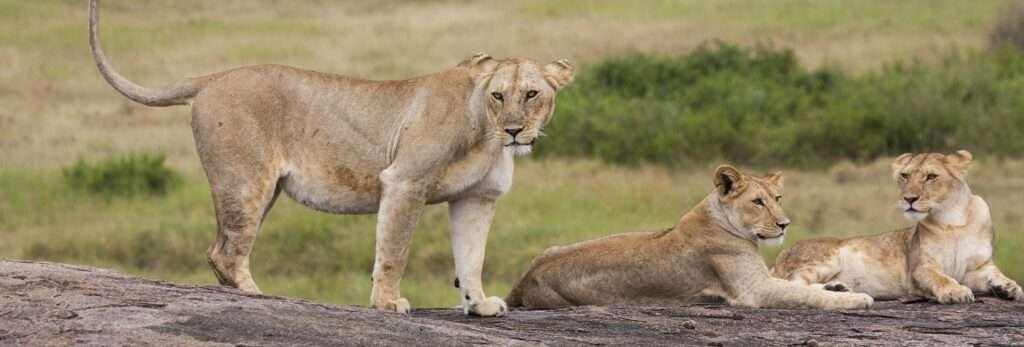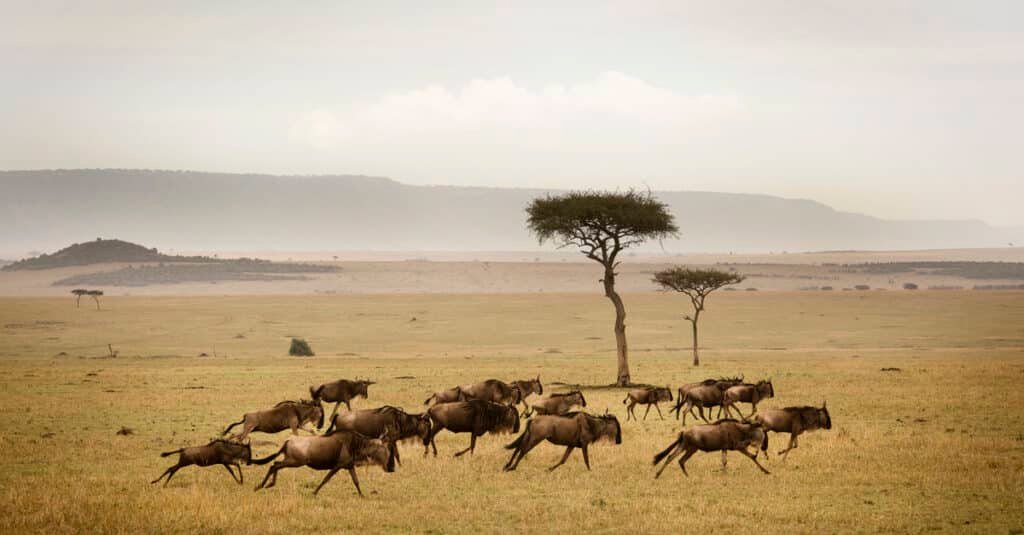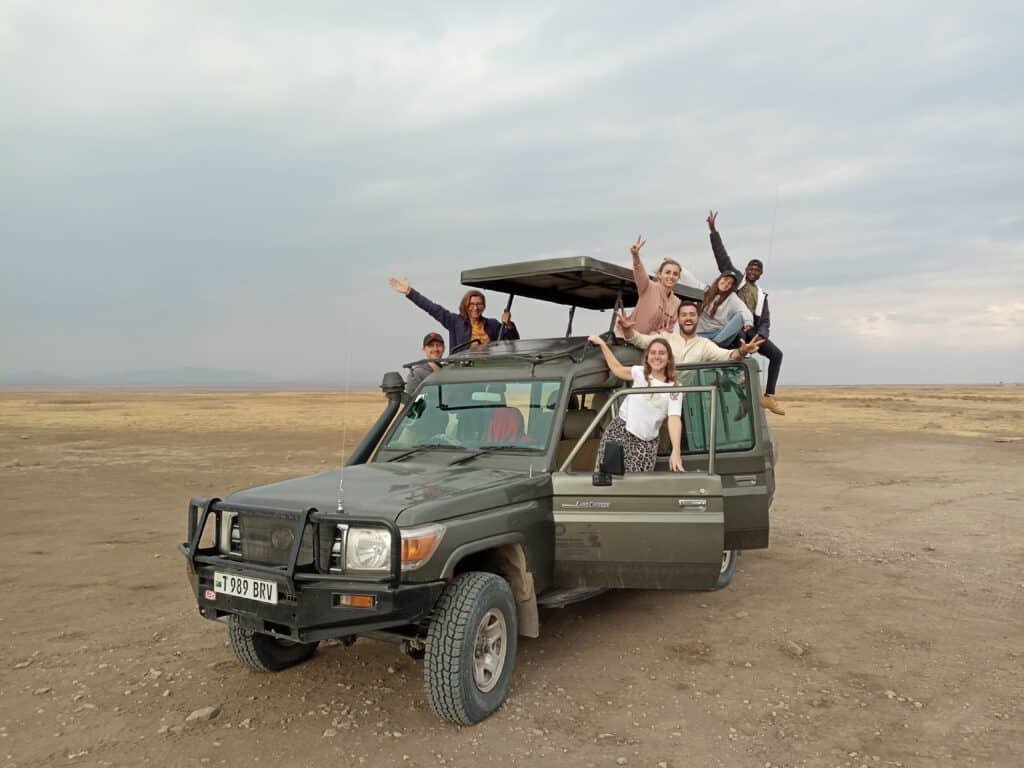Home » Destinations » Tanzania » Tanzania animals
Tanzania Animals




Tanzania Animals: A Guide to the Wildlife
Where can i see Tanzania animals? Tanzania offers some of the most spectacular safari experiences in Africa, teeming with diverse wildlife across its renowned national parks and conservation areas. What animals will I see on safari in Tanzania? In the Serengeti National Park, you’ll witness the Great Migration, where over a million wildebeest, along with hundreds of thousands of zebras and gazelles, traverse the plains in search of fresh grazing. The park is also home to the Big Five—lion, leopard, elephant, buffalo, and rhino—making it a premier destination for wildlife enthusiasts.
The Ngorongoro Crater, a UNESCO World Heritage Site, boasts a dense concentration of Tanzania animals within its caldera, including the endangered black rhino and a large pride of lions. Beyond these iconic destinations, Tanzania’s diverse habitats support a vast array of species. In Tarangire National Park, you’ll encounter large elephant herds and baobab trees, while the Selous Game Reserve offers more secluded, less-crowded safari experiences with opportunities to see wild dogs, hippos, and crocodiles along the Rufiji River.
In the lush landscapes of the Mahale Mountains and Gombe Stream National Parks, visitors can track Tanzania animals like chimpanzees, gaining a glimpse into the lives of our closest living relatives. From the open savannahs and grassy plains to the dense forests and water-rich reserves, Tanzania animals is as varied as its landscapes, promising unforgettable encounters for safari-goers.
Travel Carefree Again
Book your private, custom tour of a lifetime with 100% confidence

The Big Five
The Big Five in Tanzania—lions, leopards, elephants, rhinoceroses, and Cape buffaloes—are the top attractions for safari tourists. These animals are best viewed in renowned national parks such as Serengeti, Ngorongoro Crater, and Selous Game Reserve, which offer rich wildlife experiences and diverse ecosystems.
Tanzania’s dedication to conservation has made it a leader in protecting these species. The Serengeti is famous for its annual wildebeest migration, attracting predators, while Ngorongoro Crater hosts a dense game population, including the rare black rhino. These efforts ensure that visitors can enjoy seeing the Big Five while supporting wildlife preservation.
These drives are not just about spotting big game; they also provide an opportunity to immerse oneself in Tanzania’s stunning landscapes, from vast savannas to lush woodlands and volcanic craters. Knowledgeable guides enhance the experience with insights into animal behavior, conservation efforts, and the ecological significance of the areas visited. Whether traveling in a 4×4 vehicle or opting for a walking safari, a game drive in Tanzania promises a thrilling and educational adventure, offering memories that will last a lifetime.

Gazelles
Gazelles are a prominent group of antelope species found in Tanzania, known for their grace and speed. These elegant animals inhabit various ecosystems, from the open savannahs of the Serengeti to the arid regions of the Tarangire National Park. Tanzania is home to several species of gazelles, including the Grant’s gazelle and the Thomson’s gazelle. Grant’s gazelles are larger and have distinctive white rumps with a prominent black stripe on their sides, while the smaller Thomson’s gazelles are characterized by their long horns and tan coats with a bold black side stripe. Both species are herbivores, grazing on grasses and browsing on shrubs and leaves.
Gazelles play a crucial role in Tanzania’s ecosystem, serving as prey for predators like lions, cheetahs, and hyenas. Their remarkable speed, reaching up to 60 miles per hour, helps them evade these predators. Gazelles also contribute to the health of the grasslands by maintaining the vegetation through their grazing habits. Observing these animals in their natural habitat is a highlight for tourists visiting Tanzania’s national parks, where they can witness the gazelles’ agility and beauty, as well as their importance in the intricate web of life in the savannah.

Giraffes
Giraffes are iconic inhabitants of Tanzania’s savannas and are the tallest land animals on Earth. These majestic creatures can reach heights of up to 18 feet, with their long necks allowing them to browse on leaves and shoots high up in acacia trees, which are inaccessible to most other herbivores. The unique pattern of their coat, characterized by distinctive spots, provides excellent camouflage against the dappled sunlight of their environment. Tanzania, particularly in national parks like Serengeti and Tarangire, offers some of the best opportunities to observe these animals in their natural habitat.
In addition to their impressive height, giraffes have a number of fascinating adaptations. Their long necks, supported by special blood vessels and a powerful heart, enable efficient blood flow and prevent fainting when they lower their heads to drink. Socially, giraffes are generally peaceful animals, often seen in loose herds. These groups can vary widely in size and composition, sometimes changing from day to day. Despite their serene demeanor, giraffes can deliver powerful kicks to defend themselves from predators such as lions. Conservation efforts in Tanzania are crucial for protecting giraffe populations, as they face threats from habitat loss and poaching.

Zebras
Zebras are a common and iconic sight in Tanzania, particularly within the country’s renowned national parks and game reserves. Among the three species of zebras, the plains zebra (Equus quagga) is the most widespread in Tanzania. These striking animals are easily recognizable by their distinctive black and white stripes, which serve as a form of camouflage against predators in the grasslands and savannas. Zebras are social animals, typically found in herds that can range from small family groups to large congregations numbering in the thousands, especially during migrations.
In Tanzania, zebras play a crucial role in the ecosystem, contributing to the health of the grasslands through their grazing habits. They are an integral part of the Serengeti ecosystem, participating in the Great Migration—a yearly event that sees over a million wildebeest, along with hundreds of thousands of zebras and other antelopes, move across the Serengeti and Maasai Mara in search of fresh grazing. This migration is one of the most spectacular wildlife events in the world and underscores the importance of zebras within Tanzania’s rich biodiversity. Conservation efforts in the country’s protected areas ensure that zebras, along with other wildlife, continue to thrive in their natural habitats.

Cheetahs
Cheetahs in Tanzania are primarily found in the Serengeti National Park and the surrounding conservation areas. This region provides the ideal habitat for cheetahs, characterized by open grasslands and savannahs that offer ample hunting opportunities. Tanzania’s cheetah population is one of the most significant in Africa, contributing to the species’ overall conservation. These swift predators rely on their incredible speed, reaching up to 70 miles per hour, to chase down prey such as gazelles and impalas. The Serengeti ecosystem supports a balanced food chain, ensuring a stable prey population that sustains the cheetah numbers.
Conservation efforts in Tanzania focus on mitigating human-wildlife conflict and protecting cheetah habitats from encroachment and poaching. Organizations work alongside local communities to promote coexistence and educate about the ecological importance of cheetahs. Despite these efforts, cheetahs face challenges from habitat fragmentation and reduced genetic diversity. Continued conservation initiatives are essential to maintain and possibly increase the cheetah population in Tanzania, ensuring that these magnificent animals remain a vital part of the country’s rich biodiversity.

Pink Flamingos
In Tanzania, pink flamingos are a breathtaking sight, especially in places like Lake Nakuru and Lake Manyara. These vibrant birds, primarily the lesser flamingos, are known for their striking pink plumage, which they derive from carotenoid pigments in their diet of algae and crustaceans. Lesser flamingos are the most numerous of all flamingo species and are particularly well-adapted to the alkaline lakes in Tanzania. These lakes provide a rich feeding ground that supports vast flocks, creating spectacular scenes of pink against the blue waters and surrounding landscapes.
Flamingos in Tanzania play a crucial role in the ecosystem, contributing to the health of their habitats by controlling algae populations. Their presence attracts many tourists, making them an essential part of the local wildlife tourism industry. Conservation efforts are vital for protecting these iconic birds, as they face threats from habitat loss, pollution, and climate change. Initiatives to preserve the lakes and surrounding environments help ensure that flamingos continue to thrive in Tanzania, maintaining their status as one of the country’s most enchanting natural wonders.

Hippos
The hippopotamus, commonly known as the hippo, is a large, mostly herbivorous mammal native to sub-Saharan Africa, including Tanzania. Hippos are most commonly found in and around the rivers, lakes, and swamps of the Serengeti and other Tanzanian wildlife reserves. They are known for their massive size, with adults typically weighing between 1,500 to 3,200 kilograms. Despite their bulk, hippos are excellent swimmers and can stay submerged in water for up to five minutes. Their unique physical adaptations, such as nostrils and eyes positioned high on their heads, allow them to see and breathe while mostly submerged, aiding in their semi-aquatic lifestyle.
In Tanzania, hippos play a vital ecological role by helping maintain aquatic ecosystems. They are known to create channels and pools in the rivers they inhabit, which can enhance water flow and benefit other species. However, hippos can be quite aggressive and territorial, particularly in the water. They are known to be one of the most dangerous animals in Africa due to their unpredictable nature and powerful jaws. Despite their formidable presence, hippos face threats from habitat loss and poaching. Conservation efforts in Tanzania aim to protect these fascinating creatures by preserving their natural habitats and mitigating human-wildlife conflict.

Crocodiles
Crocodiles are prominent reptiles found in Tanzania, particularly along riverbanks, lakes, and wetlands, including the famous Serengeti National Park and the expansive Selous Game Reserve. The Nile crocodile, one of the largest and most well-known species, is prevalent in the region. These formidable predators can grow up to 20 feet in length and weigh as much as 1,650 pounds. They play a crucial role in the ecosystem by controlling fish populations and scavenging carcasses, thus maintaining the balance within their habitats.
In Tanzania, crocodiles are both revered and feared due to their powerful presence and occasional threats to humans and livestock. Efforts have been made to mitigate human-crocodile conflicts, especially in areas where their habitats overlap with local communities. Conservation initiatives are in place to protect these ancient reptiles, ensuring their survival amid growing human encroachment and habitat destruction. These initiatives include regulated hunting, habitat preservation, and community education programs to foster coexistence and appreciation for these vital members of Tanzania’s wildlife heritage.

Wildebeest
The wildebeest, also known as the gnu, is a large antelope found predominantly in the plains of Tanzania. Characterized by their robust bodies, long legs, and distinctive curved horns, wildebeests play a crucial role in the savanna ecosystem. Tanzania is home to significant populations of these herbivores, particularly in the Serengeti National Park. Here, they participate in the Great Migration, an annual event where over a million wildebeest travel in a circular route between Tanzania and Kenya in search of fresh grazing grounds and water. This migration is one of the most spectacular wildlife events on the planet, drawing numerous tourists and researchers to witness the sheer scale and drama of the journey.
Wildebeests have adapted well to the Tanzanian landscape, thriving in the open grasslands where they graze on a variety of grasses. Their migratory behavior is crucial for maintaining the ecological balance, as their grazing patterns help rejuvenate grasslands and their presence supports a host of predators and scavengers. Predators such as lions, hyenas, and crocodiles rely heavily on wildebeests as a food source, particularly during the migration when many wildebeests fall prey while crossing rivers or navigating predator-rich territories. Conservation efforts in Tanzania have focused on protecting the wildebeest and their migratory routes to ensure the sustainability of this keystone species and the broader Serengeti ecosystem.

Hyenas
Hyenas are fascinating and highly adaptable animals found throughout Tanzania, with the spotted hyena being the most prevalent species. These carnivorous mammals are known for their distinctive laughing calls, which serve as social communication within their clans. Hyenas live in matriarchal societies where females are larger and more dominant than males, and they exhibit highly cooperative behavior, particularly during hunting and feeding. Their strong jaws and powerful digestive systems allow them to consume and digest bones, making them highly efficient scavengers that play a crucial role in the ecosystem by cleaning up carcasses.
In Tanzania, hyenas inhabit a variety of environments, including savannas, grasslands, and even mountainous regions. They are particularly abundant in the Serengeti National Park, where they coexist with other iconic African wildlife such as lions, elephants, and zebras. Despite their reputation as scavengers, hyenas are also skilled hunters capable of bringing down large prey. Their presence is vital for maintaining the balance of the ecosystems in which they live, as they help control the populations of other animals and recycle nutrients back into the soil. Conservation efforts in Tanzania aim to protect hyena populations and their habitats, ensuring these unique creatures continue to thrive.
Popular Trips to Tanzania
Best Places To Visit
Gombe Stream National Park, located in western Tanzania along the shores of Lake Tanganyika, is a small but
Katavi National Park: A Hidden Gem in Western Tanzania Katavi National Park is a remote, untouched wilderness in
Location and Size Serengeti National Park. Serengeti National Park, situated in northern Tanzania, is one of the world’s
Rubondo Island National Park, located in the southwestern corner of Lake Victoria in Tanzania, is a pristine and
Arusha National Park is a compact gem in northern Tanzania, close to the lively town of Arusha. Spanning
Lake Natron Lake Natron, located in northern Tanzania near the Kenyan border, is a saline lake known for
Best Time To Visit
The best travel time for your tour of Tanzania depends on the regions you visit, and what you wish to experience. Discover the climate and month by month highlights.
Safety
Tanzania as well as Zanzibar, are generally considered a safe destination for travel. As with all other destinations, all you need to do is follow these simple safety measures.
Travel Guide
Planning a trip to Tanzania? Before you travel, get your lowdown on all the essential details – from visa and entry to communications, internet, currency, cards, and health information.
From the Blog
What Our Guests Say
Dzigbordi A / Mar 2024 • Solo
The trip were really amazing and took many pictures and videos and we enjoyed a lot it was a great experiences that we are not going to forget.
Diakiss D / Feb 2024 • Friends
The trip were really amazing and took many pictures and videos and we enjoyed a lot it was a great experiences that we are not going to forget.
Alessandro S / Feb 2024 • Friends
Great experience absolutely recommended!
Great driver too 💪🏻 we saw all the animals we wished to see!
Everything was planned by African Diurnal so we could enjoy the most without any stress in planning












